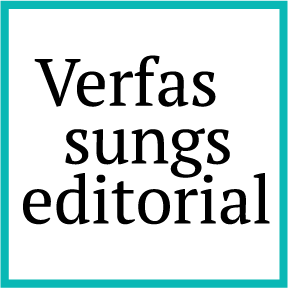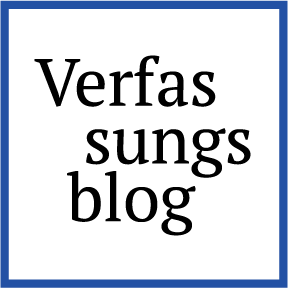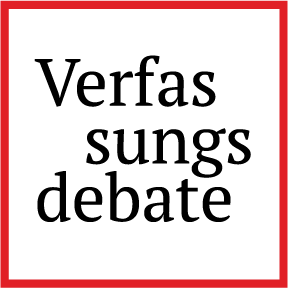Balancing Intellectual Property Protection with the Human Right to a Healthy Environment
Internal and External Reconciliation Approaches
This contribution examines the practical ways in which the human right to a healthy environment (HR2HE) can influence the development and interpretation of intellectual property (IP) laws. It focuses on two potential approaches to reconciling this human right with IP: (1) the so-called “internal” reconciliation approach, which essentially uses the HR2HE as an interpretive tool to recalibrate IP law’s own internal rules and mechanisms in a more sustainability-friendly direction, and (2) the “external” reconciliation approach, which views the HR2HE as an independent defence against IP infringement actions that can be invoked in courts to challenge allegations of IP infringement.
Internal Reconciliation of IP with HR2HE: Example of copyright and upcycling
The first reconciliation strategy that involves the “internal” balancing of IP laws with the relevant human rights must be well familiar to IP law specialists. The Court of Justice of the European Union (CJEU) frequently employs this approach when balancing IP protection with more “traditional” human rights (as compared to the relatively “new” right to a healthy environment), such as the right to freedom of expression (see, e.g., the CJEU judgments in Funke Medien [2019], Spiegel Online [2019], Pelham [2019], VG Bild-Kunst [2021]) or the rights to privacy and personal data protection (see, e.g., the CJEU judgments in Promusicae [2008] and Coty Germany [2015] or, more recently, in La Quadrature du Net [2024]).
In practice, this approach enables the CJEU and, following its example, national courts in Europe to interpret IP law’s own concepts and balancing mechanisms, which are initially designed to strike a balance between the exclusivity of IP law and the freedom of use – the most classic example in this respect being exceptions to IP rights, or, as they are also sometimes termed, “user rights”, in a manner that aligns with the principles of the relevant human right at issue.
By analogy with this already well-established approach to balancing IP protection with more “classic” human and fundamental rights, interpreting IP law in light of the “new” HR2HE could help courts reach more balanced solutions when IP protection presents obstacles to sustainability objectives. In the context of copyright law, for example, the exhaustion of a distribution right, as well as the exceptions for quotation and pastiche, could offer such flexible avenues for integrating the HR2HE logic into the design of this field of IP protection. More specifically, the conflicts between copyright protection and upcycling – previously discussed in contributions to this blog post symposium by Péter Mezei and Heidi Härkönen – could be examined through this lens.
Copyright exhaustion and upcycling
Regarding, first, the exhaustion principle, in its current interpretation by the CJEU, this principle may hinder sustainable practices such as upcycling, where old products featuring copyright-protected prints, ornaments, or design patterns are repurposed into new goods while retaining visible elements of the original design – potentially triggering copyright infringement claims. Notably, in Allposters, the CJEU held that modifying physical copies of copyright-protected works constituted a new reproduction, meaning upcycling could thus be governed by this exclusive right, rather than the exclusive right of distribution, to which only the principle of copyright exhaustion applies.
However, if interpreted in light of the HR2HE, the CJEU’s arguably rather restrictive position expressed in Allposters could be reconsidered. Given the demands and principles of HR2HE (which include, among other things, the principle that “[f]inancial imperatives and even certain fundamental rights, such as ownership, should not take precedence over environmental protection considerations”), modifications to original copyright-protected works – such as upcycling – might be classified not as infringements under the exclusive right of reproduction, but rather as instances of an exhausted exclusive right of distribution.
Quotation exception and upcycling
Beyond the principle of exhaustion, another flexible area within EU copyright law that could be interpreted more broadly in light of the HR2HE is the exceptions to copyright holders’ exclusive rights, particularly quotation and pastiche. Using upcycling again as an example of an environmentally friendly practice that could—and in some cases already does—face challenges due to copyright law, the current interpretation of the quotation exception in Article 5(3)(d) of the InfoSoc Directive by (at least some) judicial authorities in the EU may not favour this sustainable consumption practice.
Indeed, as previously discussed in this symposium by Péter Mezei, in the Finnish case concerning copyright law restrictions on upcycled jewellery made from broken tableware, the Finnish Copyright Council held that the requirement for a dialogue between the original work and the new work quoting it (as advanced by the CJEU in the Pelham [2019] case) was not met in the case of upcycled jewellery and broken tableware, as no dialogue could be established between the broken tableware and the jewellery created from it.
When viewed in the light of the HR2HE, however, this interpretation of a dialogue requirement under copyright law’s quotation exception fails to strike a fair balance between exclusivity and freedom of use (including the environmentally sustainable use of old, broken porcelain). Particularly in the context of artistic expression (within which creative upcycling arguably falls), dialogue may not always require verbal communication but can instead be conveyed through allusions or symbolic messaging. As such, the use of broken tableware in jewellery may already convey a strong message—perhaps serious to some and humorous or playful to others—but nonetheless a message. Importantly, the European Court of Human Rights’ understanding of dialogue and speech more generally extends well beyond verbal communication to also cover artistic creation. Thus, relying on the human rights of upcyclers in this context, including the HR2HE, as well as the possible freedom of artistic expression, may help change any existing or potential future conservative interpretations by the judiciary in Europe of the quotation exception in the upcycling context.
Pastiche exception and upcycling
Finally, another internal balancing mechanism in copyright law holds significant promise for accommodating environmentally-friendly reuses of objects bearing copyright-protected works: the pastiche exception. This exception is outlined in Article 5(3)(k) of the InfoSoc Directive, which permits “use for the purpose of caricature, parody, or pastiche”. While parody may not offer a strong defence against copyright infringement for upcycling businesses – due to the requirement of humour in derivative works – the concept of pastiche, by contrast, shows greater promise.
The concept of pastiche broadly aligns with upcycling, which involves combining different styles and materials to create something new from a patchwork of elements. If interpreted broadly in the light of the HR2HE, the copyright law’s pastiche exception has all the potential to cover, among other practices, upcycling (although the success of such interpretation hinges on the outcome of the currently pending before the CJEU Pelham II case which is aimed to clarify the concept and meaning of the copyright law’s pastiche exception).
External Application of the Human Right to a Healthy Environment to IP
As the examples discussed above demonstrate, the existing copyright law mechanisms hold significant potential for a flexible, HR2HE-friendly interpretation of this field of IP law (and similar flexible approaches could be further extended to other areas of IP, including but not limited to trademark law, patent protection, and remedies for IP infringement).
However, should the relevant authorities (including the judiciary) fail to accommodate considerations regarding the right to a healthy environment within the internal design of IP laws, those affected by such failures should, arguably, still have standing to allege a violation of their HR2HE in its external application to IP – i.e., as a human rights law-based defence in and of itself.
This allegation would then essentially involve balancing environmental human rights (i.e., in Europe, either “greened” traditional human rights, such as, first and foremost, the right to privacy in Article 8 ECHR or Article 7 of the EU Charter, and/or a self-standing right to a healthy environment in Article 37 of the EU Charter) with the right to property of IP holders, which is likewise recognised as a human right in Europe, both by the explicit legislative wording of the EU Charter of Fundamental Rights in Article 17(2) and in the practice of the European Court of Human Rights concerning the general right to property under Article 1 of the First Protocol to the European Convention on Human Rights (see here for further discussion and – in much greater detail – in E. Izyumenko and C. Geiger, Human Rights and Intellectual Property before the European Courts: A Case Commentary on the Court of Justice of the European Union and the European Court of Human Rights [Elgar Commentaries in European Law, Edward Elgar Publishing, forthcoming 2025]).
However, the first question that needs to be asked before considering the particularities of such an external balancing approach of IP with the HR2HE is whether such an external application of human rights to IP is possible at all. Notably, the CJEU, in its Pelham/Funke Medien/Spiegel Online triad, explicitly rejected, in, respectively, [65], [64], and [49], the possibility of applying any external, human-rights-based defence to the existing copyright (or related rights) law framework in those cases.
Is an external, human rights-based defence to IP infringement possible at all?
It could be argued that an external, human rights-based defence to IP infringement is still possible, and that the CJEU’s position might not necessarily be an obstacle to the external application of human rights – specifically, the HR2HE – to IP, understood as a separate defence. This is because, first, as early as the year 2000, the UN had already established “the primacy of human rights obligations over economic policies and agreements”.
Indeed, it is difficult to conceive why ordinary economic laws, such as IP, should be immune to external human rights constraints. Likewise, it is hard to imagine, for instance, the ECtHR rejecting an otherwise valid claim alleging a violation of one of the Convention rights simply because the allegation stems from IP regulation.
Furthermore, the ECtHR has already previously conducted an external human rights-based review of IP law provisions, most notably in its Ashby Donald and “The Pirate Bay” rulings. Admittedly, though, neither in those cases nor in any other IP-related cases it has been called to examine so far has the Strasbourg Court explicitly ruled on the validity of a human rights-based defence (in the sense of a separate “exception”) to alleged IP rights infringement. There is a simple reason for this: Not being a court of “fourth instance” (see here at [362]), the maximum the ECtHR can do when resolving the conflict between IP protection and other Convention rights is to rule that national IP legislation or a national judicial resolution of a specific dispute before it has failed to properly respect the human right at stake, resulting in its violation. However, the question of how to remedy that violation at the national level—whether through “internalising” the relevant human right’s logic within IP laws via legislative reform or a changed approach to judicial interpretation of such laws, or allowing an “external” human rights law-based defence to an IP infringement action—remains the responsibility of national authorities. In this sense, it does not preclude an “internal” reconciliation of IP laws with relevant human rights, to which the CJEU appears to adhere firmly and unconditionally.
That being said, an (albeit rare) situation may still arise in which even the most flexible interpretation of existing IP laws fails to strike a proper balance with a conflicting human right. In such a case, and in the absence of legislative intervention capable of remedying this imbalance, an external human rights law-based defence—understood as a separate, independent limitation on the scope of IP protection—should still be possible, at least from the perspective of human rights law. Again, it is difficult to contemplate how norms of “simple” economic regulation, such as IP laws, could block this supremacy, given their inferior legal status under international human rights law.
Moreover, an external human rights law-based defence approach to IP is not unfamiliar to a number of national courts in Europe. Therefore, invoking the HR2HE outside the framework of IP laws should indeed be possible, albeit only when national authorities have demonstrably failed to strike a proper balance between IP and the HR2HE internally – whether through judicial interpretation or the relevant legislative reform.
It thus seems pertinent to discuss in further detail how such an external HR2HE defence to, say, trademark or copyright law infringement allegations advanced against upcyclers could be exercised in practice.
Problems (and solutions) associated with the external application of the HR2HE to IP
Admittedly, actors alleging that IP laws violate the HR2HE may face a number of challenges.
First, it may be difficult for upcycling (as well as other types of sustainability-oriented businesses, such as those focusing on repair, refurbishment, customisation, or other types of reuses of old goods) to prove a causal link between the IP-related restrictions on their businesses and the harm to the environment.
It would also not escape the attention of the courts in such litigation that the immediate interest that such businesses seek to protect is, first and foremost, not necessarily their interest in environmental protection, but rather their immediate property interest or their interest in operating their businesses freely without restrictions.
Nevertheless, arguably, if properly viewed in the light of the HR2HE, the courts could (and should) still take into consideration in such litigation, first, the fact that the economic interests of upcyclers, repairers, refurbishers and the like also align with the significant societal goal of environmental protection. As a result, the freedom to conduct a business or the right to property of such actors could be interpreted in light of the HR2HE – much like the ECtHR regularly interprets one human right in light of another; for example, freedom of expression in light of freedom of assembly (and vice versa), or the right to education in light of freedom of religion.
Further, the courts examining such claims might also wish to consider the impact of imposing restrictions on sustainable businesses on broader groups of citizens, not only on the immediate actors in the litigation.
Additionally, when assessing the extent of damage to the property rights of IP holders caused by sustainable business practices, the courts may wish to take into account the fact that the IP holder has already realised the full economic value of the object for which they seek IP protection through the initial sale. This, in a way, would then “externalise” the exhaustion argument within the framework of human rights law, should it fail within the internal IP law assessment.
Finally, the courts might question whether original IP holders had even anticipated secondary markets – such as upcycling or repair – for their products. If they had not, it could be argued that their human right to (intellectual) property claim is unfounded, as there is no right to acquire property under the ECHR, for instance. Consequently, claims by IP holders of an unjustified violation of their human right to property would, in essence, be deprived of their human rights status, leaving IP holders’ claims in a much weaker position when balanced against the superior HR2HE of upcyclers or other sustainable reworkers of old products or works in this scenario.
Conclusion
As demonstrated, multiple pathways exist for reconciling IP protection with the HR2HE, both through internal and external balancing of IP law with this increasingly significant human right. Whether through internal reinterpretations of IP laws or a more radical external application of the HR2HE-based defence to IP infringement actions, these approaches offer the potential to develop a more sustainable IP framework that adequately addresses environmental concerns.
On a broader note, the analysis presented here, along with the excellent contributions to this blog post symposium, highlights the need for ongoing reflection on the intersection of IP law with human rights more generally and HR2HE more specifically. Regarding the latter, its evolving role in shaping the future of IP laws warrants further attention, particularly as the global demand for sustainable and equitable solutions intensifies.



